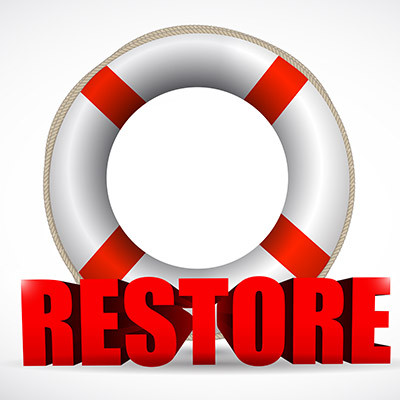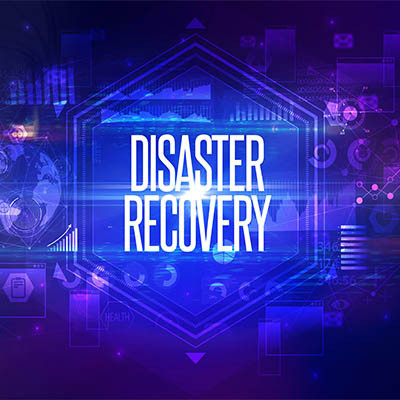Backup and Disaster Recovery (BDR) are incredibly important elements of any successful business, as without them, you’re just one disaster away from a world-shattering wake-up call. We take a strategic approach to data backup and disaster recovery that considers your daily data backup needs while recognizing its long-term benefits. Let’s discuss how you can ensure that your business can use BDR to survive any potential threat the world throws at it.
TS3 Technologies Blog
The modern business technology market is filled with exciting innovations, but one area that doesn't quite capture the imagination is data backup. Perhaps backup is not the most thrilling topic, but nevertheless, the growing demand for enhanced data security and redundancy in businesses is driving developers to push the boundaries of the technology, creating more advanced features to meet the growing demand for redundancy. Today, we take a look at three intriguing features of these emerging data backup solutions.
Tape backup has been used for a long time, and it was once the most prominent solution for data backup out there. Nowadays, it’s not used much at all, mostly in favor of better and more convenient solutions. However, there has been a slight resurgence in tape backup, so we want to look at why some companies might still use it, despite its flaws.
Data is the lifeblood of a business. In the event of unforeseen circumstances such as hardware failure, malware attacks, or human error, having a well-designed backup and data recovery strategy in place becomes paramount. Today, we try and guide you through the process of creating a robust backup and data recovery strategy, ensuring the safety and accessibility of your data.
We often discuss data backup and disaster recovery on our blog, and you may even be familiar with some of the terms and practices we throw around. Today, we want to take a closer look at the 3-2-1 rule and how it impacts your business’ ability to recover in the face of a disaster. Let’s dive in and see how the 3-2-1 rule can make or break your company’s data infrastructure.
A disaster can take many forms, from a raging snowstorm to deleting the wrong file. Regardless of what kind of disaster you face, you can know that it doesn’t take much to impact a business, especially if the business doesn’t have a business continuity plan in place. How does your business recover from such a devastating scenario? How can it get its data back and in proper working order? That’s what we want to tell you about today.
We often think about disasters in the context that they completely destroy the office, rendering your business incapable of operations. However, this is only part of what is encompassed by the term “disaster,” and the whole picture is far more terrifying. Any disruption to your operations can be considered a disaster in its own right, so we wanted to take some time to go over what you should look out for with your disaster planning.
Running a business is stressful, but so is thinking about a future where that business (and its data) no longer exists. If you’re not careful with your preparedness, you could stare down a disaster with no hopes of recovery. This is why we urge you to take proactive action now—so you can prevent these kinds of scenarios from taking your business off the market for good.
There are countless ways your organization could face down a disaster, whether it’s a high-profile natural disaster, a physical disaster, or a technology-related disaster. If you aren’t prepared to face the consequences, your business could falter in the face of such incidents. How can your business best prepare itself for all manners of disasters?
A good business owner envisions the future and what it could bring about. You may have already devoted a considerable amount of time to the good things that could happen, but how often do you picture the bad? If you don’t imagine the worst-case scenario, you could be putting your business’ life on the line. Are you prepared to deal with a data loss incident?
Business can be difficult when everything goes right, but when disaster strikes, serious issues arise that need to be answered fast and if you don’t have a business continuity plan in place, your business will be in peril. It doesn’t matter what you do, if circumstances decide that your business needs to shut down, having a disaster recovery policy in place as a part of a larger continuity plan, will do more than you think to save your business.
It doesn’t take a rocket scientist to understand that a lot can go wrong with business just about every day. If something were to go horribly wrong and you lost access to your data infrastructure, what would you do? Let’s take a look at some of these disaster scenarios and how much data backup and disaster recovery can make a difference for your organization.
When we are talking about the continuity of your business, we typically use the colloquialism “disaster” for just about anything that could put the brakes on your business’ ability to do business. But what happens when that “disaster” is an actual disaster and threatens to derail your business completely? Today, we take a look at some disaster preparedness tips that can quite literally save your business from ruin.
All businesses store and transmit data on a regular basis. From financial spreadsheets to client information to employee records, there is no shortage of data required by most organizations to maintain operations. What would you do if all that data were to suddenly vanish into thin air, or worse, be stolen by hackers?
Data recovery is a major pain point for small businesses, but not all organizations have the same resources and assets that make it possible. Small businesses in particular are more prone to forego data backup and disaster recovery because it does not provide an immediate return on investment. Well, we’re here to tell you that this mindset is wrong.
With the future so uncertain, it’s no surprise that many organizations are turning their focus toward business continuity. There are a lot of components that go into making a successful continuity plan, and if you want to optimize your chances of survival in the face of a disaster, you need to ensure that all your bases are covered.
With most businesses dipping into their disaster recovery strategies, and millions of workers either out of work or working remotely, it is honestly a great time to remind you that March 31st is World Backup Day. This is a day where we help promote the idea of taking backups of your crucial IT systems to ensure that you have access to your important information if a disaster were to strike your business.
World events have always had a big impact on the banks that one finds on Wall Street, but in many ways, the one that coronavirus (COVID-19) has demonstrated has been unprecedented. As such, it almost provides a case study of the importance that disaster recovery planning has for any business… Wall Street institutions included.
Modern businesses generate a lot of data, some of which they couldn’t really function without. This makes the prospect of data loss especially dangerous, making a data backup imperative. Today, cloud computing is seen as the premiere option in terms of data redundancy and availability. Today, we’ll look at why you want to consider storing your backed-up data in the cloud.























